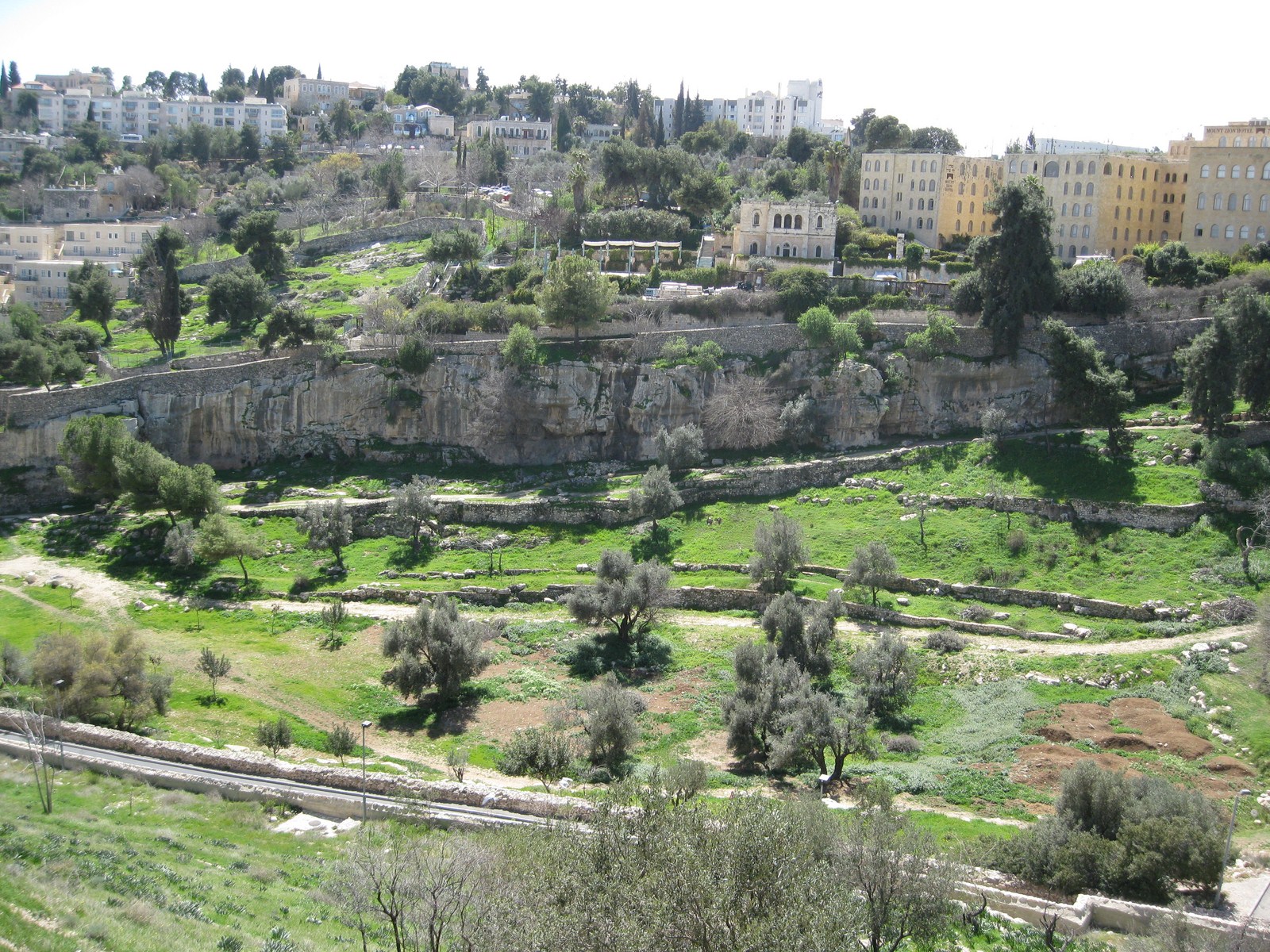
Hakeldama or Field of Blood

Hinnom Valley
Picture: alt-arch.org
The Armenian Apostolic Orthodox Patriarchate of Jerusalem – 14/5/18
We read about Hakeldama in the New Testament; the Aramaic words Hakeldama mean Field of Blood. Judas Iscariot, one of Christ’s original students, is mostly known for betraying our Lord. In the Gospel of St. Matthew we read that Judas went to the clergy in the Temple and asked: “What will you give me if I deliver Him to you?” He received 30 silver coins, and the Gospel tells us that since then Judas was watching an opportunity to hand Jesus over.
After the Last Supper, Christ went with His students to the Mount of Olives to pray. That night an armed group of people had set out to arrest Jesus Christ. Judas was with that group, and identified Christ by giving a kiss. From there our Lord was taken to the High Priest, questioned and imprisoned- all which would lead up to the Crucifixion.
In the Gospel of St. Matthew 27 we read that Judas then fully realized the impact of his betrayal, and felt remorse. Judas decided to free himself of the money, as if that would invalidate his betrayal. He returned the 30 silver coins he had received for the betrayal to the priests.
From Jewish literature of the Second Temple period we know that there were various collection chests in the Temple. Apart from the annual head tax of half a silver shekel to the Temple and money for the bringing of sacrifices, voluntarily donations could be made also. Funds were set aside to sustain the poor, maintain the water conduit of the city of Jerusalem and many other things, but also to pay for funerals. We know from the New Testament there was a large group of people of non-Jewish origin who believed in God, knew the Old Testament and recognized Jesus as the promised Messiah- the New Testament calls them “God-fearers”. King Herod, when he embellished the second Temple in Jerusalem, had made the “courtyard of gentiles”, a space where all people could enter and get close to the Temple.
The priests refused to put the 30 silver coins in the treasury of the Temple, as it was considered tainted money, but used it to buy a piece of land for the burial of foreigners.
The book of Acts tells us that Judas bought the land with the 30 silver coins, and commit there suicide. The piece of land talked about, is also known as the Potter’s Field, because of the yielding of clay from it. The Potter’s Field lies in the Southern part of the Valley of Hinnom, just outside the present Old City of Jerusalem. The Old Testament tells us that in the eastern lower part or Tophet of the valley, children were sacrificed alive in burning flames to the pagan god Moloch. These gruesome facts made its original Hebrew name “Gehinnom” also in the Koine Greek language as the designation for “hell”.
Since early Christian times the site of the Hakeldama was known, the Church Fathers Eusebius of Caesarea (263-339 AD) and Jerome (Eusebius Sophronius Hieronymus, 347-420 AD) identified the exact location of Hakeldama, namely close to Mt. Sion.
The area is a vast area, from Abu Tur reaching till Silwan, or Siloam, where the pool of Siloam lies, just outside the present old city, in the City of David.
In the Potter’s field are graves to be found from the late Second Temple period, which is the time of Christ, especially in the form of burial caves. In the 12th and 13th century, the Crusader period, the Hakeldama continued to be used as burial grounds and ossuaries (where bones of the deceased were kept together), and on the site ruins of built arches can still be seen.
The area is property of the Armenian Apostolic Patriarchate of Jerusalem, attested as early as at least the 16th century.
